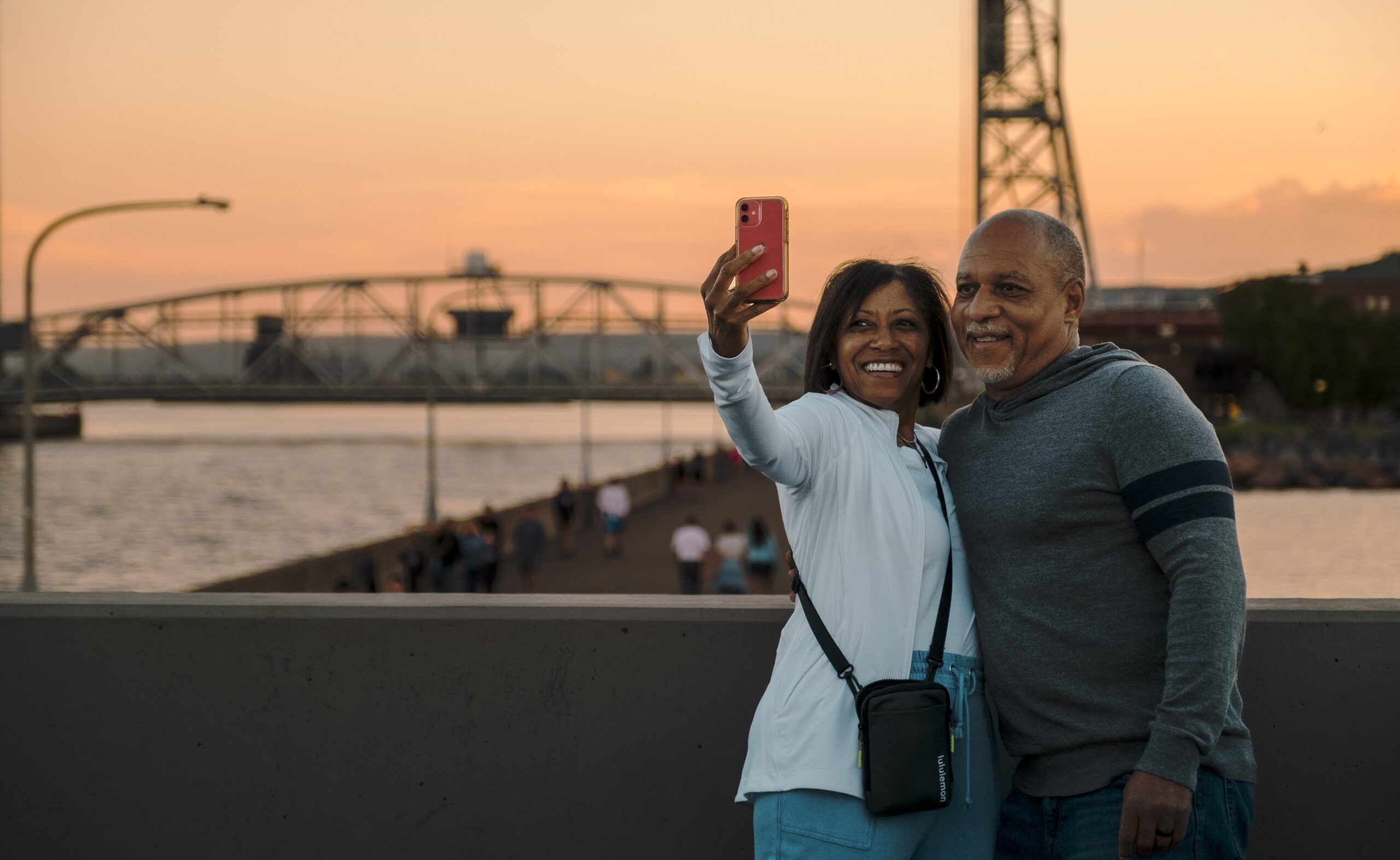Inclusion and representation in communications and marketing isn’t just one initiative or campaign – it’s something that must be woven into everything we do and backed up with actions. Not only is this the right thing to do, it’s also a wise business decision in a consumer world that keeps getting more and more diverse, and as consumers are looking to support businesses whose values align with their own.
We want to acknowledge that we are coming to this conversation from a place of privilege. And, that there’s so much more than communications when it comes to creating inclusive communities and workplaces. However, this is one piece of the puzzle and an approachable way to show intentional inclusivity as we all work to build strong, safe places for everyone.

While we’ll be the first to admit there is always room for improvement, last week, we were grateful to have our work for the City of Duluth honored at the Explore Minnesota Tourism Conference Awards as the winner of the “Creating a Welcoming Experience Award.” Alongside the wonderful team at the city and our partners at Lawrence & Schiller, and those in the Duluth tourism industry, we’ve been working to ensure we’re helping all potential visitors see themselves in Duluth – and feel like they belong in Duluth. How? By focusing on these four pillars that prioritize inclusivity in our work – and that can apply to any business and brand.
Use Inclusive Imagery
In order to use inclusive imagery, you need to have inclusive imagery. We have intentionally planned photo and video shoots to ensure we have a wide variety of people to feature, including working with a Duluth agency to hire diverse talent. Gathering assets that feature a variety of different folks, especially when a shoot is happening within a limited timeframe, doesn’t happen by accident. And even though it might take more legwork upfront, it pays off. We want potential visitors to see visual representation – which includes race and ethnicity, and also extends to gender, sexual orientation, age, ability and more – so we didn’t rely on chance to make this happen. Take matters into your own hands to get the assets you need.
Throughout all your work, keep authenticity in mind. For example, if you show a person of color on the cover of a brochure but then don’t feature others from the BIPOC community in any other way, it demonstrates that using diverse imagery is more of a checkbox than anything else. Avoid tokenism and make sure you’re being thoughtful and intentional.
Once you have inclusive imagery, use it. Take a hard look at content, and keep your goal top-of-mind throughout creation and approval processes. If this is an area with room for improvement at your business, don’t be afraid to be a squeaky wheel! The more it is pointed out that there is a lack of inclusive imagery being used, the sooner it will become second nature to ensure that there is representation of all kinds in your brand’s visuals.
Create and Amplify Content Celebrating Diversity
Storytelling is a powerful way to create an inclusive, welcoming business and brand. Uplifting stories about people who are from different backgrounds or have different abilities helps show that everyone belongs. It also helps to think about all aspects of diversity. When it comes to a travel destination, we consider far more than differences that can been seen. In addition to things such as race, ethnicity, gender and more, we think about content we can create that helps plan for lifestyle needs that are inclusive to consider those who want to avoid alcohol or may have special dietary needs, who may need sensory-friendly activities, who come from different socioeconomic statuses and more.
How can this be translated into a plan? There are many ways! Profiles provide an opportunity to highlight a wide array of individuals from your organization or destination. The Faces of Duluth series does just this, shining a spotlight on Duluthians who are part of the tourist industry and represent many backgrounds, interests and stories. Another option could be creating content to help people know what to expect when they visit your business or city, such as this guide to accessibility and sensory-friendly information or this round-up of budget-friendly ideas. It also includes the everyday content you create, such as social media posts, and actively working to ensure that there are a diverse variety of topics and people represented on an ongoing basis.
Choose Diverse Vendors
When it comes to actionable items that can really make a difference when working to operate equitably, choosing to spend dollars with diverse vendors is a must. From vendors you work with for hard goods, to creative partners, to restaurants team meals are being purchased from, there are so many ways in which businesses can support diverse vendors. Influencer partnerships are one place to keep this top-of-mind. Not only can working with diverse partners expand your audience, it also shows that you’re spending your dollars in line with your beliefs.
Collaborate with People from Different Backgrounds
While planning and creating diverse content is important, it’s even more important to work closely with people from different backgrounds to develop these materials. This ensures that people’s stories are told authentically, and not marred with notes of colonialism or other unconscious bias. This also helps clarify what people from different communities may be looking for from your business or destination, so you can help meet their needs and show how they belong. It’s also helpful to acknowledge we might not get it right every time. Keeping an open mind to receiving feedback, apologizing and educating ourselves is imperative. Approach collaboration from a standpoint of understanding to truly listen and have opportunities to learn. Work to earn trust with people from diverse backgrounds, hear their stories, and then help share them.
When it comes to overall work to create a more inclusive space and organization, one thing that can be helpful is to prioritize DEIA workshops and trainings for your team. As we individually grow in our education and understanding about inclusion, we can better identify ways our organizations can grow, as well. If you have other ways you prioritize inclusion in your communications and marketing work, or if you’re interested in discussing how we could help you implement some of these ideas, leave a comment or send us a note – we’d love to connect!
Cover photo credit: Visit Duluth

